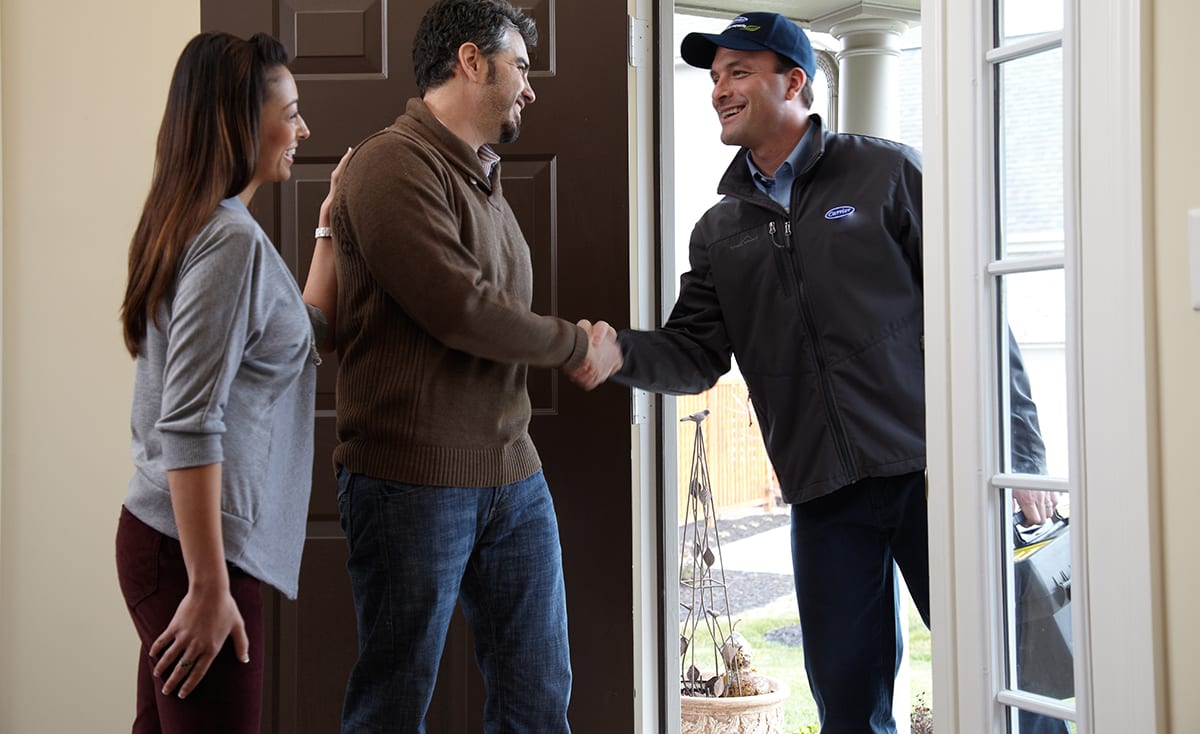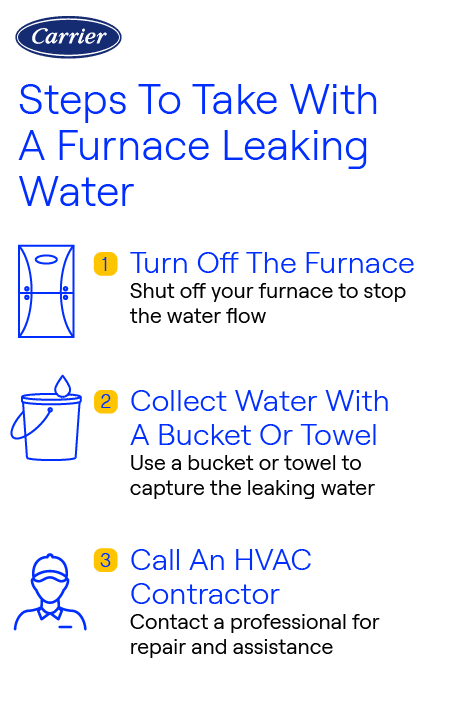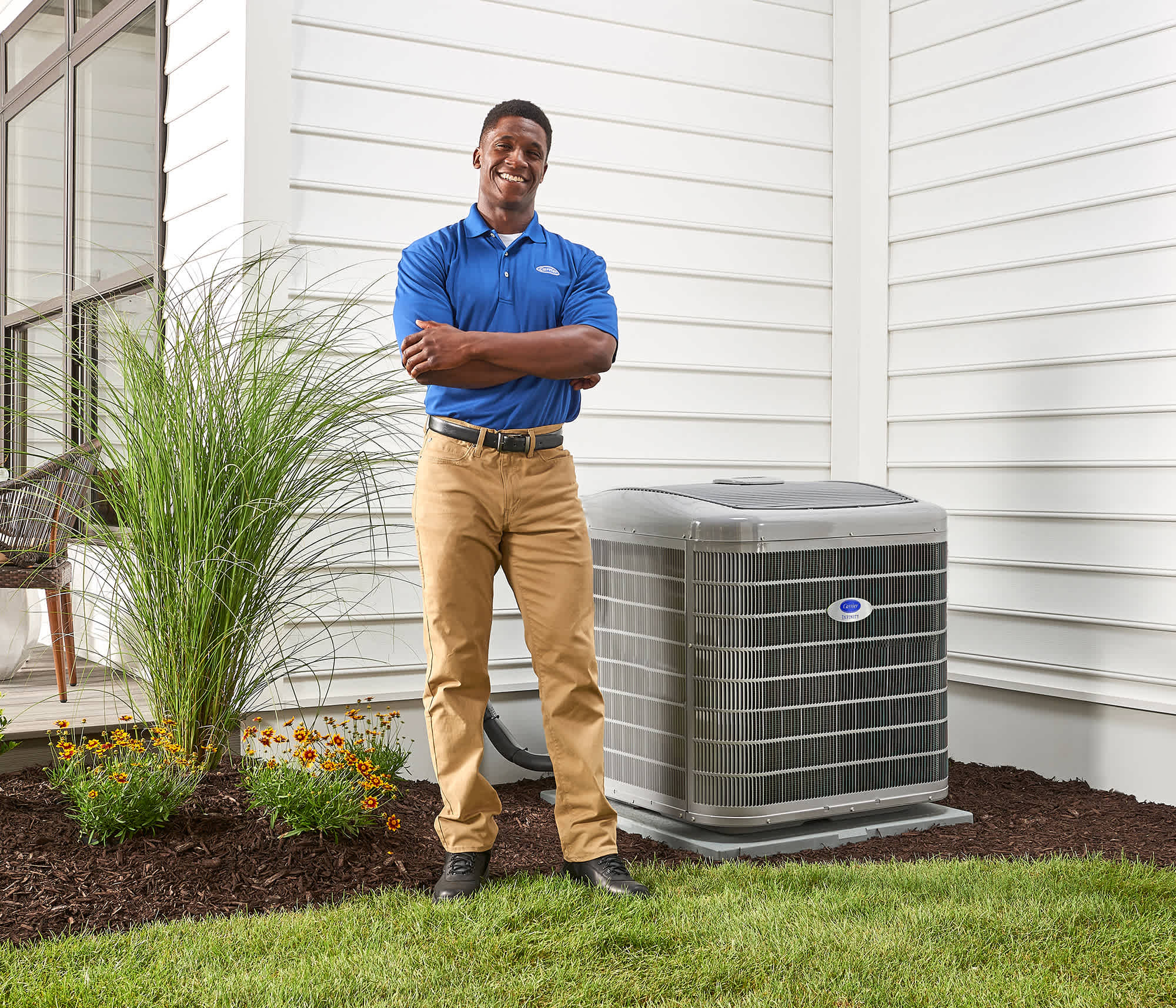Furnace Leaking Water
By Travis Baugh
If you’ve discovered that you have a furnace leaking water or water dripping from furnace, addressing the issue quickly is crucial to prevent further damage. Understanding the causes of furnace leaks can help you identify and resolve the problem effectively.

The Causes of Water Dripping From Furnace
Kevin Dickson, president of Energy Services Air Conditioning, Heating and Electrical in Naperville, Illinois, says the most common cause of furnace water leaks is a clogged condensate drain.
“A pool of water at the base of the furnace signals a leak,” he adds. “Another possible cause is a breach in the heat exchanger.”
High-efficiency furnaces produce more condensation than standard-efficiency models. If the condensate drain line becomes clogged or blocked, the excess water can back up and leak from the furnace. Regular furnace maintenance, including checking and cleaning the condensate drain line, can help prevent this issue.
The heat exchanger is responsible for transferring heat from the combustion chamber to the air. Over time, the heat exchanger can develop cracks, allowing water to escape. This is a serious issue that requires immediate attention, as a cracked heat exchanger can also lead to carbon monoxide leaks. If you suspect a cracked heat exchanger, it is important to contact your local Carrier dealer for inspection and furnace repair.
The Signs Of A Furnace Leaking Water
If you've noticed water pooling around your furnace, dampness or moisture in the surrounding area, or unusual sounds and odors, it could be a sign that your furnace is leaking water. Identifying these signs early on can help prevent further damage and ensure the efficient operation of your heating system. Signs include:
- Water pooling around the furnace: This can occur due to various reasons, such as a blocked condensate drain line, a cracked heat exchanger, or a faulty humidifier. If you see water collecting around the base of your furnace, it's important to address the issue promptly.
- Dampness or moisture in the surrounding area: This can manifest as wet walls, floors, or nearby objects. Moisture buildup can lead to mold and mildew growth, which can be harmful and the integrity of your home. It's crucial to identify the source of the leak and take appropriate measures to resolve it.
- Presence of unusual sounds: A leaking furnace may produce gurgling or hissing sounds, indicating that water is escaping from the system.
- Musty or moldy odors: This can result from water accumulation and subsequent microbial growth.
If you suspect that your furnace is leaking water, it's best to contact your local Carrier dealer . They have the expertise to diagnose the issue accurately and provide the necessary repairs or even a furnace replacement if necessary. Remember, regular maintenance and timely repairs can help prolong the lifespan of your furnace and ensure its optimal performance.

Steps to Take With A Furnace Leaking Water

If you notice water leaking from your furnace, take immediate furnace troubleshooting steps to prevent damage.
- Turn off the furnace to stop further leaks and reduce the risk of electrical hazards. This prevents additional water buildup and protects internal components from damage.
- Place a bucket or towel under the leak to collect water and prevent it from spreading to surrounding areas. This helps minimize water damage to floors and nearby structures while you wait for professional assistance.
- Call an HVAC contractor to diagnose and fix the issue. Common causes of furnace leaks include clogged condensate drains, faulty pumps, or heat exchanger issues. A professional technician will identify the source of the problem and perform necessary repairs to restore your system’s efficiency.
Addressing a furnace leak quickly can prevent costly gas furnace repairs and extend the life of your heating system. Regular maintenance can also help avoid leaks in the future.
Safety Concerns with a Leaking Furnace
A leaking furnace can pose several safety concerns that should not be ignored. It is important to address the issue promptly to prevent potential damage to the furnace and surrounding areas, as well as mitigate the risk of electrical hazards and health risks associated with mold and bacteria growth.
When a furnace is leaking water, it can result further damage to your system, not to mention it could also damage the area surrounding your furnace, such as the floor, walls, and nearby objects. Water can cause corrosion, rust, and deterioration of the furnace, leading to operational issues and reduced efficiency. Additionally, prolonged exposure to water can weaken the structural integrity of the surrounding areas, potentially causing structural damage.
Another safety concern with a leaking furnace is the risk of electrical hazards. Water can come into contact with electrical components, such as wires, switches, and control panels, leading to short circuits, electrical malfunctions, or even electrical fires. This poses a significant danger to both the furnace and the occupants of the property.
Furthermore, a leaking forced air furnace can create a favorable environment for mold and bacteria growth. Moisture from the leak provides the ideal conditions for these microorganisms to thrive. Bacteria growth can also lead to unpleasant odors and potentially harmful airborne contaminants.
Preventive Maintenance Tips for Your Furnace
Proper preventive maintenance ensures your furnace runs efficiently and lasts longer. One important task is regularly checking and cleaning the condensate drain. A clogged drain can cause water leaks, leading to mold growth and system malfunctions. Cleaning it periodically prevents blockages and keeps your furnace running smoothly.
Scheduling annual furnace maintenance with your local Carrier dealer is also crucial. During these inspections, the technician checks for worn-out components, cleans the system, and ensures the furnace operates safely and efficiently. Catching small issues early can prevent costly repairs and unexpected breakdowns.
Additionally, keeping humidity levels in check helps protect both your furnace and indoor air quality. High humidity can lead to mold and rust, while low humidity may cause static electricity and dry air discomfort. Using a humidifier or dehumidifier as needed can help maintain a balanced indoor environment. Following these maintenance tips will enhance your furnace’s performance, improve energy efficiency, and extend its lifespan.
Connect With Your Carrier Dealer When Your Furnace Is Leaking Water
At Carrier, we understand the importance of a reliable and efficient furnace. Our network of dealers is ready to assist you with any furnace-related concerns, including leaks. Contact your local Carrier dealer today to schedule an appointment and ensure your furnace is functioning at its best
Frequently Asked Questions About Furnaces Leaking Water
- How Much Does it Cost to Replace vs Repair a Furnace?
- Discover the signs you need a new furnace
- How long does a furnace last?
- Learn the causes of a furnace not kicking on
- Discover what to expect with a furnace tune-up

